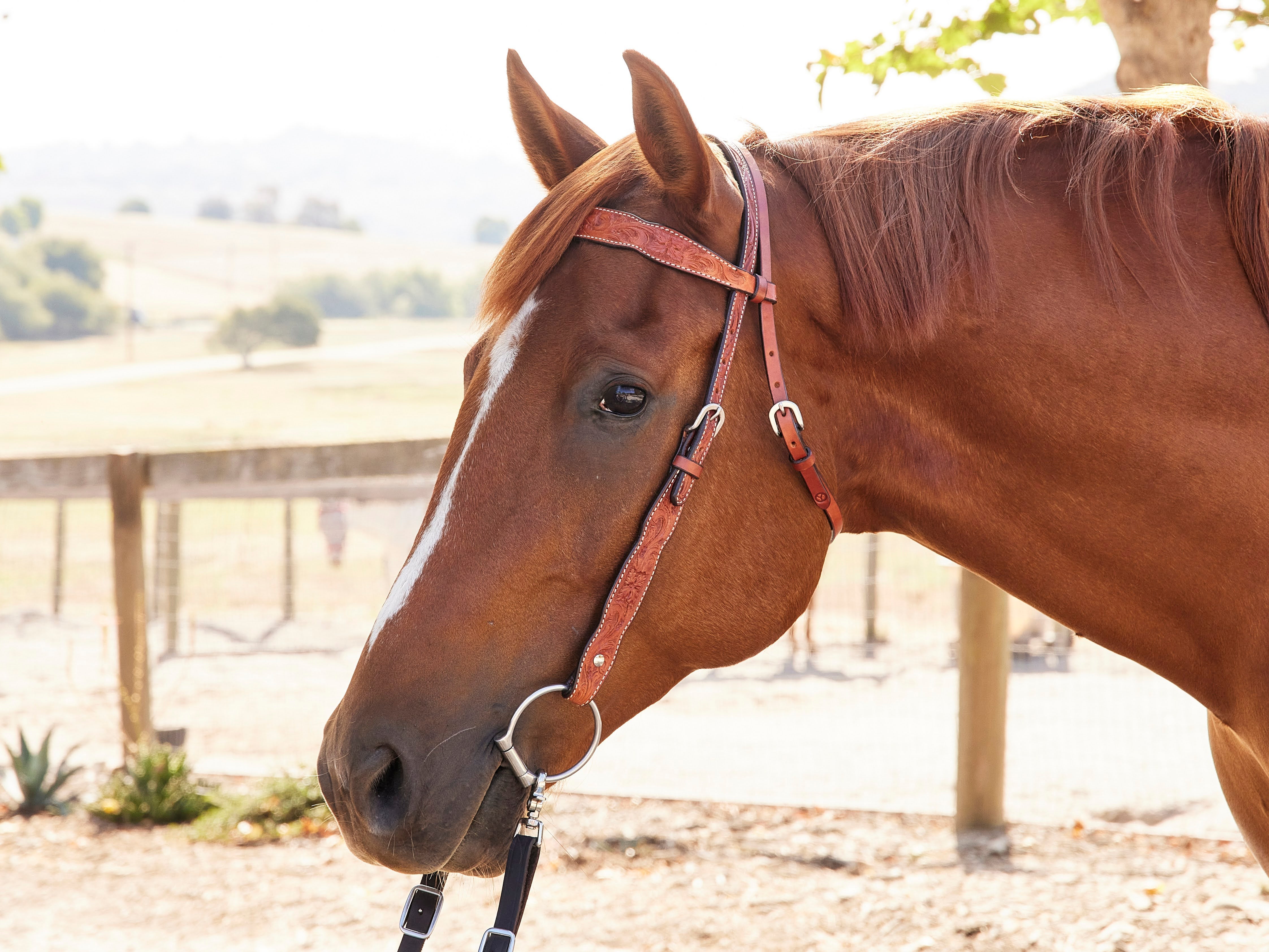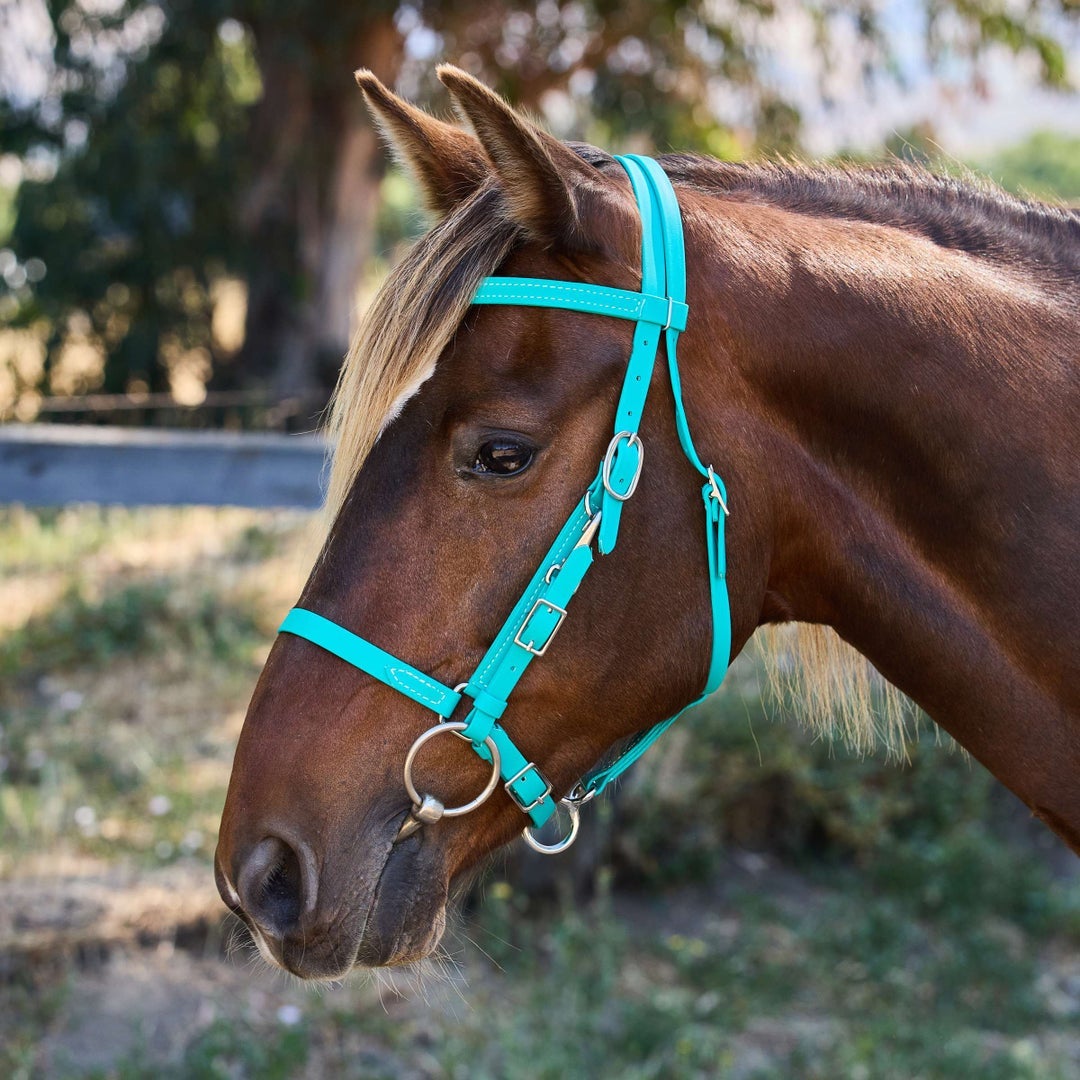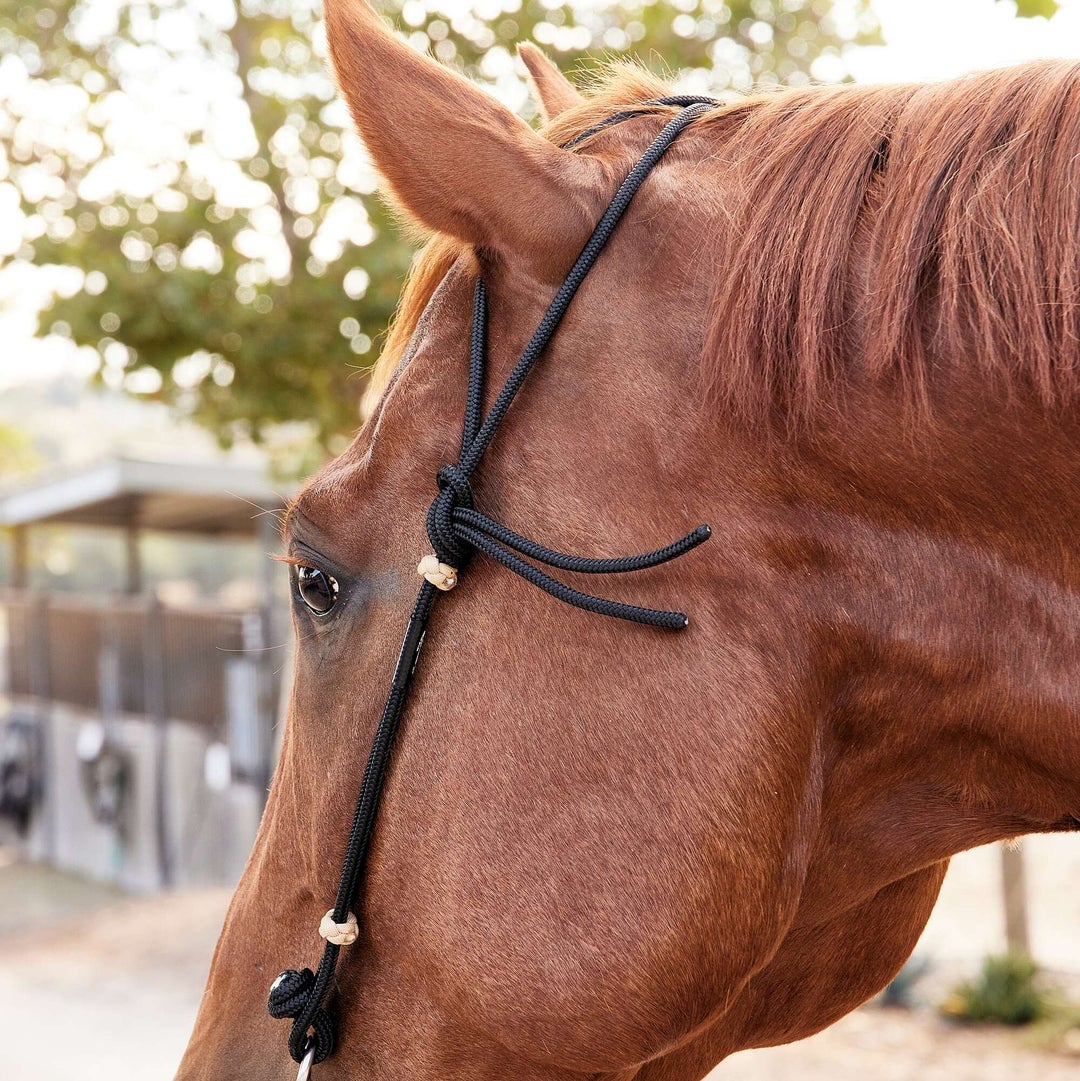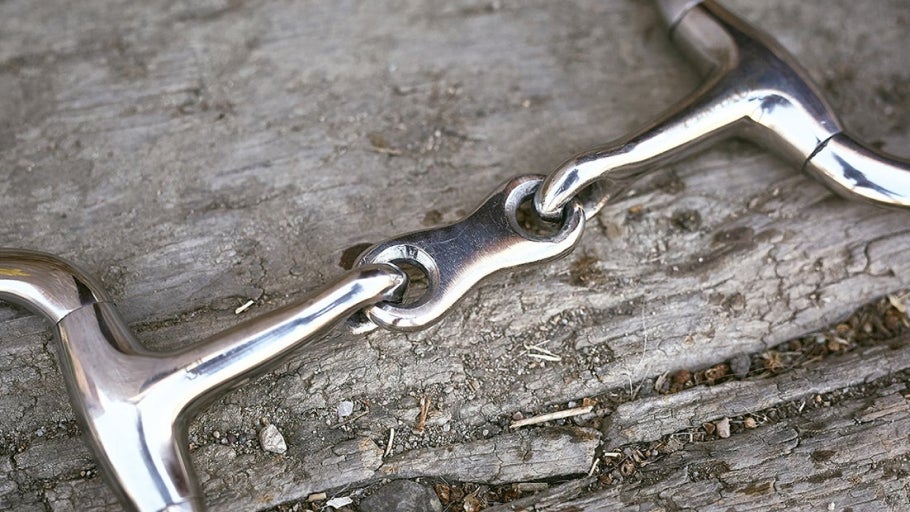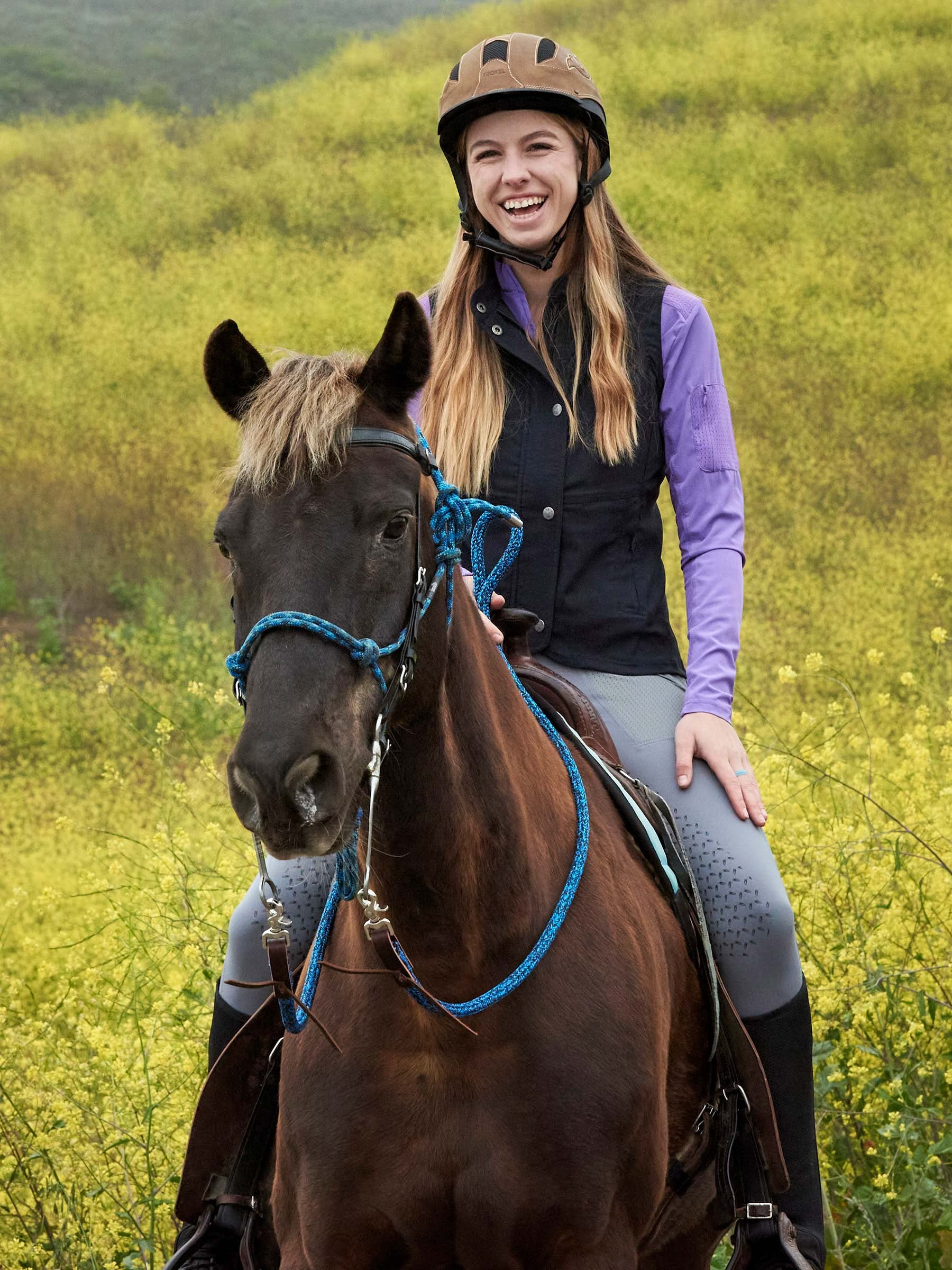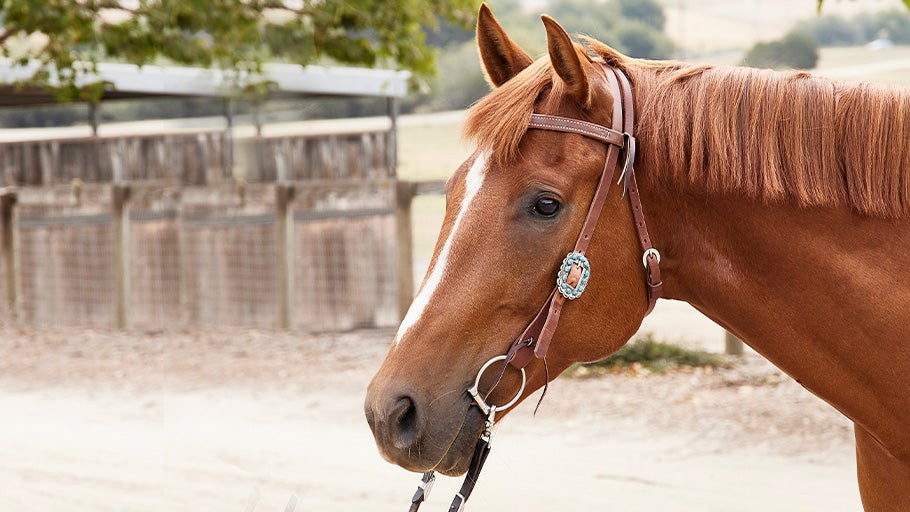
Western Bridle & Headstall Guide: Styles & How to Choose
It can be daunting to narrow down your headstall of choice when there are so many options! We have put together this informational guide to help you understand the parts of headstalls and differentiate the options, so you can feel better equipped to pick the right one for you and your equine partner.
The headstall is one of the most important pieces of equestrian equipment; it helps the rider communicate with their horse through hand aids. While personal preference is a large consideration, there are a few safety and objective needs to keep in mind. Whether you are riding in a bit or going bitless, take a look to learn more!
What's the Difference?
Western Bridles vs. Headstalls
The two terms "bridle" and "headstall" are often thrown around interchangeably. But what is the difference between the two? In general, "bridle" is an English term and "headstall" is a Western term, since a bridle usually includes a noseband whereas a headstall refers to the pieces other than a noseband (crownpiece, browband or earpiece, cheek pieces, throatlatch, and the bit and reins). Both bridles and headstalls come in different styles which serve different purposes. We will go into the headstall styles and their purposes in this article, but if you are curious about English bridles, check out our article on the Types of English Bridles.
The parts of a headstall are almost the same as the parts of a bridle. A bridle includes all of these parts but with the addition of a noseband. The parts of a headstall include:
- Crownpiece - The portion on the horse's poll, behind the ears
- Browband or Earpiece - Either on the horse's brow or around a single ear
- Throatlatch - Extends down from the crown piece around the horse's jaw and works to keep the headstall stable
- Cheek pieces - Connect the bit to the headstall and contribute to the equipment's adjustability
- Bit - Interchangeable piece that is dependent on what your horse needs
- Reins - Connect the rider to the bit and horse and can come in many styles depending on the needs and wants of the rider
Headstall & Bridle Styles
There are three main styles of bridles and headstalls found in western riding: browbands, sliding ear, and split ear. Each serves a different functional purpose and provides unique aesthetics.
Browband Headstalls
Browband headstalls are considered to be the most secure, as they traditionally come with a throatlatch. The throatlatch is designed to hold the headstall steady when poll pressure is applied, which helps prevent the headstall from coming off over your horse's head or sliding the cheek pieces forward toward your horse's eyes. The browband headstall itself can vary with many different widths and designs. This headstall style is the most universal option, and it can be used with practically any horse and bit combination.
Sliding Ear Headstalls
Sliding ear headstalls feature an ear loop that is adjustable on the crown piece, so you can customize placement to different-sized horses. This style of headstall often does not have a throatlatch and can come in one-ear or two-ear variations. A two-ear sliding headstall improves balance as the earpieces are symmetrically placed for better security. A one ear sliding headstall is a great option for horses irritated by traditional browbands. It is not recommended to use a one-ear headstall on green or unruly horses, as they are less secure.
Split Ear Headstalls
Split ear headstalls are similar to the sliding ear style; however, these headstalls have a single static slit that is cut into the crown piece. This style is a suitable option for more sensitive horses easily irritated by browbands or loops that go around their ears. Split ears also do not come with a throatlatch and are therefore not as secure as a traditional browband headstall. It is not recommended to use this kind of headstall with inexperienced horses. If you are using this headstall on both smaller and larger horses, make sure the slit is large enough to accommodate both sizes.
Headstall Materials
There are three prominent materials used for headstalls and bridles for western riding. Leather is the most common and provides many customizable and fashionable choices. Synthetic material equipment is a great choice for budget-conscious riders and is favored for its easy cleaning. Lastly, rope headstalls are the least common but can be a great training tool when used correctly. Below we will go further into the benefits of each material.
Leather Headstalls
Leather is the most common and traditional headstall material thanks to its natural look and feel. With so many leathers on the market, you have a wide variety to choose from to match with the rest of your tack. Leather is durable and considered to be the most comfortable option, as it is less harsh on the sensitive areas of the horse. If a leather headstall has been compromised for any reason through cracking or breakage, do not use it! The quality of leather will determine your headstall's longevity, as well as your leather care habits.
Synthetic Headstalls
Synthetic headstalls are a great choice for horse owners who do not wish to invest time into maintaining and caring for a leather headstall. Synthetic materials are also useful if you want to keep your equipment lightweight. Because synthetic headstalls are not as heavy as leather ones, they are a good option for young or small horses. However, synthetic headstalls do not have as much give, so is important to properly adjust your headstall to the correct tightness.
Rope Headstalls
Rope headstalls are less common but still favored by some riders. Rope headstalls are recommended for experienced riders and horses that only require a light hand, as they apply more localized pressure depending on the roundness and stiffness of the rope. If you want a minimalist look without all of the buckles and straps, then a rope headstall might be ideal for you.
Types of Bit Ends
How the bit connects to the headstall or bridle can change depending on the material it's made out of. The different types also serve different purposes, so what works best for one rider might not be the right choice for another. Additionally, some bit ends are more appropriate for certain types of bits compared to others. Want to learn more about the types of bits? Keep reading for an explanation of bit mouthpieces and check out all of our horse bit articles for a deeper dive!
Buckle
Buckle bit ends are convenient for quick and secure changes if you need to swap your headstall to a different bit or horse. There are typically one or more holes to accommodate different bit thicknesses or cheekpiece heights. Brass, nickel, or stainless steel hardware are typically used. Depending on the quality and care, buckle bit ends can be prone to rust over time.
Quick Change/Knot
Quick change bit ends and knot bit ends are pretty well summed up by their names. Quick change bit ends are an extension of the cheek pieces that go around the bit and secure easily through a loop on the outside. Knot bit ends have a similar concept; the knot slips out and back in through a slit. They tend to be just as secure as leather lace tie bit ends once the knot is secured in place.
Snap
Snap bit ends make for super quick bit attachment and detachment. They are more prone to damage or breakage and can be harder to replace if the snaps are completely stitched down into the cheek pieces. If they are unstitched, it is easier to replace or interchange them with different snaps (as long as the snap width is appropriate for the headstall width). Make sure any snaps are facing outward to ensure they do not rub your horse's face.
Chicago Screw
Chicago screw bit ends give off a traditional western look, with many featuring classy concho designs. A screwdriver is required when interchanging bits. We highly recommend using glue during tightening, especially if you will be using the same horse and bit combination long term. If glue is not used when tightening, Chicago screws are more prone to becoming loose and falling out.
Lace Tie
Lace tie bit ends require a bit more maintenance due to their leather construction, but they offer a natural look and feel. It is good practice to check the security of your lace tie bit ends before each ride, as they can loosen if the knot is not tight. If one breaks (normally after heavy use or an accident), they are fairly easy to replace.
Bit Types to Use with Headstalls
Bits are the most variable piece of a bridle or headstall since slight differences in the design can make big differences in the functionality. The two general categories of bits are leverage bits and non-leverage bits/snaffle bits. In this section, we will go over the differences between these two categories. To learn more about the different styles and types of bits, as well as what they are used for, check out our guide on bit mouthpieces!
Non-Leverage Bits
A snaffle or non-leverage bit gives one-to-one pressure from the rider's hand to the horse's mouth. These bits put pressure primarily on the horse's tongue and bars and are the milder options of the two bit categories. It is best to use a snaffle (or non-leverage) bit with a browband headstall, since the goal of these types of bits is stability, and browbands provide the most stability. A split-ear or one-ear headstall could more easily slip off with a snaffle, even if a curb strap or chain is being used. In this case, the curb strap or chain does not serve the purpose of increased leverage and only provides more stability. If the split or one-ear headstall comes with a throatlatch, it is safer to use a snaffle because the headstall will be less likely to loosen or slip off.
Leverage Bits
Leverage bits increase the pressure a rider applies to their horse by using a pivot point. In a simple sense, if a rider applies one pound of pressure to their leverage bit, it will multiply the pressure that the horse feels. This means that (depending on the specific bit) the horse feels two pounds of pressure for every pound the rider applies. These bits are often accompanied by curb chains or straps to increase pressure as well as change the location of the pressure. The bit on its own will apply tongue, palate, and bar pressure as well as poll pressure since it acts as a lever on the headstall. With the curb chain or strap, chin pressure is introduced and contributes to the overall functionality of the bit.
Leverage bits, like shanks, kimberwicks, or curbs, are recommended for split-ear and one-ear headstalls. The downward pressure on the poll with leverage bits prevents the crown of the headstall from slipping over the ears when the reins are engaged. You will traditionally not see a throatlatch on these types of headstalls because they are used with leverage bits, which mainly work off of the tongue, palate, chin, or poll pressure. Browband headstalls also work with leverage bits but are more commonly seen with snaffles.
Curb Straps & Chains
Curb straps and curb chains are used in conjunction with bits, though they are not compatible with every type of bit. Additionally, not every horse benefits from having one. Read on to see if it's a good option for you!
Curb straps or chains are an important part of your bit and headstall combination. Depending on the bit being used, pressure is applied on the poll through the cheek and crown pieces on the headstall when the reins are engaged. When used with a snaffle/non-leverage bit, it provides stability and prevents the bit from moving in the horse's mouth. When used with a leverage bit, it applies additional pressure in a different location from the rest of the bit or headstall.
A single curb chain applies additional pressure to the horse's chin and therefore has stronger leverage. A double curb chain lies more smoothly in the chin groove and is considered more gentle than a single chain. Leather or synthetic curb straps are the mildest options. Any strap or chain needs to be properly adjusted to the correct angle so that it lays flat against the chin groove with a few fingers' width of space between it and the horse to effectively communicate your hand aids.
Sidepulls, Bitless, & Hackamores
When it comes to riding without a bit, you will find a lot of opinions (sometimes very strong ones) on what the best bitless option is. We do suggest doing your own research or consulting your trainer to understand how your headstall communicates to your specific horse—bit or bitless. Sidepull (the non-leverage option) and hackamores (the leverage option) are great for horses who respond better to nose pressure than mouth pressure. Hackamores come in two main variations, loping and mechanical. Mechanical hackamores have metal side pieces, which are similar to a shank bit's cheekpieces. A loping hackamore (pictured above) also uses leverage by pulling the chin knot up and applying more pressure to the top of the nose.
These kinds of headstalls are standard in most disciplines but not legal in all—for example, dressage. Just because a bit is not present, that does not mean that the headstall or bridle is gentler on the horse. Just as with any piece of tack, when used correctly it can be a great tool but if put in the wrong hands or on the wrong horse, it can create more issues. Deciding to use a bitless bridle or variation depends on what type of pressure translates best to your horse and how you can communicate with them, so make sure to consult your trainer or a trusted barn buddy before making the switch! For more information about hackamores and bitless bridles, check out this helpful diagram by the University of Kentucky and an informational article by Horse and Hound Magazine.
Headstall Use Per Discipline
In rodeo competitions, you are likely to see many variations of tack setups, each with its own benefits. In many events, riders use tie-downs that connect to a noseband and prevent the horse from throwing their head up in the way of the rider as well as keeping their balance in the appropriate place. In events where security is needed, often roping events, riders tend to use headstalls with throatlatches. These help stabilize the headstall and prevent the tack from moving into the horse's face. Browband headstalls are more commonly used with throatlatches, but you will also see single ear or split ear headstalls with throatlatches. As long as all the necessary parts are present, the style of headstall that is used is based on individual needs.
In other disciplines, such as trail riding and endurance, similar needs are considered when choosing a headstall. If riders want more security, then a headstall with a browband and throatlatch is the best pick. For riders who want the least amount of material on their horse, a split ear headstall might be the winner. Ultimately, riders should pick a headstall that attends to their horse's needs as well as their aesthetic desires.
Considering Horse Conformation
Another factor to consider is your horse's head conformation. A wide leather headstall on a petite horse or a thin headstall on a larger-built horse can look a bit funky! This is largely based on personal aesthetics, but if the headstall doesn't fit the horse's head, it can interfere or communicate poorly. Browbands or ear loops may be too large or small and therefore bother your horse, or possibly even interfere with the function of the headstall. Because of this, it is always a good idea to ask a trainer or trusted barn buddy for an opinion on new tack and whether it's appropriate for you and your horse.
Closing Thoughts
Ultimately, your headstall choice does come down to personal aesthetic preference and what works best for you and your horse; however, there is much to consider on the back end depending on what kind of riding you will be doing. Taking all of this into consideration can feel like a lot, but with proper help and lots of trial and error, the perfect tack set will make its way into your ride. We hope you feel better equipped to make an educated choice, but if you have more questions feel free to contact our friendly customer service at info@ridingwarehouse.com or by calling 1-800-620-9145. Ride on!
Further Reading
We understand that you may want to do more research on western headstalls and bridles. That's why we have compiled some great sources, so you can take a deeper dive!
- University of Missouri on the Parts of an English and Western Bridle
- Riding Warehouse on Bit Types and Their Purposes
- Horse and Hound on English Hackamore Use
- University of Kentucky on Different Bitless Options
- Parelli Natural Horsemanship on Hackamores


